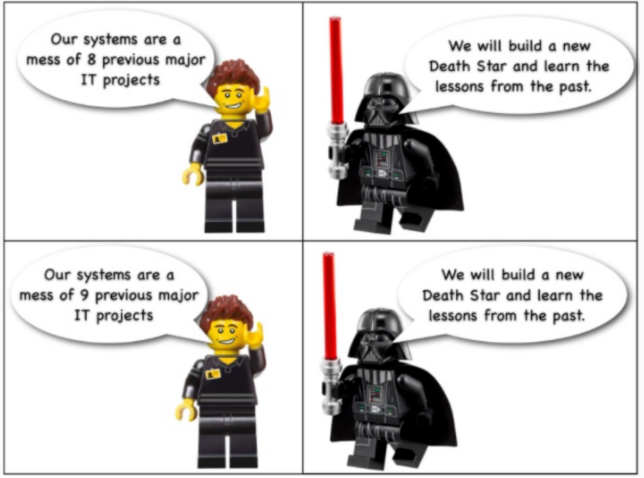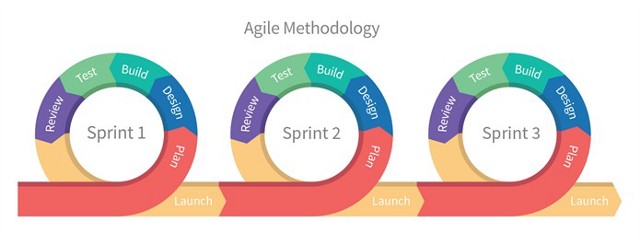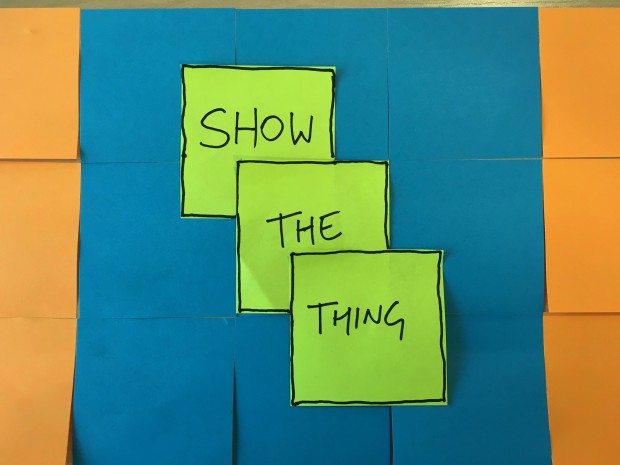You may have heard us talking and referencing ‘Agile’ many times. You can tell that we believe that working in this way is a good thing, but you might not entirely be sure what we mean.
Let’s start with a metaphor
“You are leading an expedition. You tell your group to build a bridge. The team spend a lot of time trying to find the right materials, or might end up building a bridge that wasn’t strong enough to support the whole group.
But if you told them that you wanted to get the whole group across the river, they could solve the problem in different ways – build a raft, find the narrower point to cross – they know when they’re done when they had all got across the river”. (Alice Newton-Rex, Signals).
How most organisations get projects underway
This is not unique to us by the way. Most large and complex organisations, like our university, and those with lots of issues from legacy IT systems, will often use a huge specification document, a formal business case and a Project Initiation Document. And if the project is mega-big (like OneWeb), there will be a few more steps in the process towards nirvana, hum sorry – approvals…
Project Management practitioners call this a ‘Waterfall’ project management methodology because it requires a clear plan that only goes one way – first this, then this, then this – until you’re at the bottom of the waterfall. And for many projects this remains a perfectly reasonable and effective way to deliver a certain type of ‘fixed result’ outcome. However, the nature of this project calls for a different approach – one which recognises the complexity of what we are attempting to do.
 Source: a tweet from swardley
Source: a tweet from swardley
Focusing on outcomes, not specific solutions
What I like about outcomes is that they are (and should be) measureable. They should also deliver something to the user and the organisation that is valuable.
For example, users should be able to access our web pages in half of the time, or sign up in half of the time. That way we are committing up front to features that will deliver the outcomes, and the whole team can own the problem. It doesn’t lock the team into an inflexible way of solving the problem before they even get the chance to understand it.
Why build a bridge when a raft will achieve the same goal in half the time with a fraction of the resources? It also allows different specialists to work quickly, collaboratively, and iteratively to solve various problems along the way. The team will know when it’s done when users can access web pages in half of the time! This is how agile works.

Source: Nicholas Ivanechky
“Agile is flexibility out of necessity. It’s being prepared to live in a small house first, meet your team often, work with those who can do several things at once, and add changes as you go” (Natalia Babaeva).
Agile is not suitable for everything
We don’t suggest that Agile is the silver bullet to all our problems. Its real merits are when a product or service can be quickly and easily changed and improved based on the availability of new data. Digital products and services fit this criterion. You don’t need to stick to the initial plan when new data suggest a change to your approach is needed. So changing content and technology is easy, safe and low risk. It means a recognition that users and technology never stand still, so we can design our services and products for constant evolution, and continuous delivery. It also means reduction of wasted work, because as teams we focus on outcomes.
Communication is at the heart of agile – “show the thing”
It means improved visibility and being able to identify potential blockers before they become an issue. It allows colleagues to go and see what we’re doing for themselves, regularly.

Source: GDS “Show the thing”
Why is it right for OneWeb?
- It will help us stay focused on our users and their needs
- It breaks down delivery into manageable pieces
- It lets us work quickly, openly and test often, with users
- It’s scalable and adaptable – allows iteration
- It creates consistent roles and accountabilities
- It allows efficient use of resources against priorities
- It lets us apply what we learn as we go along
- It’s proven to work at scale
Parting notes
“Waterfall is like going on a long distance journey by train.
Agile is like going on a long distance journey by car with a good navigator.
If you have planned your train journey perfectly – it’s great.
If you need to change direction – it isn’t.
If your train connections all work – it’s great
If you miss these key milestones – it isn’t
You don’t have to talk to your colleagues on the train.
The driver and navigator need to talk in the car at each junction.
Trains use big infrastructure, which when it all works, is great
Cars allow you to flexibly and dynamically adjust to change.
Both can crash – but the overall impact on the organisation is different.
Safety on trains is someone else’s responsibility.
In a journey by car, if you don’t feel safe, you can stop”. (anonymous)
Thanks for reading!